
Tewkesbury Abbey, Gloucestershire
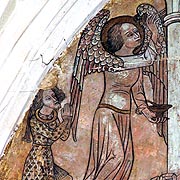 |
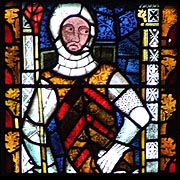 |
 |
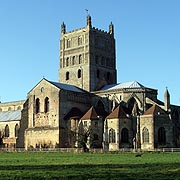 |
Tewkesbury Abbey is one of the most remarkable survivals of a monastic church in England. Originally founded as a Benedictine house in AD 715, the present building is almost entirely 12th century in date, including the superb tower; though the eastern chapels and ambulatory are 14th century. It has lost its Lady Chapel. It is best remembered for its extraordinary collection of tombs and monuments to the Lords of Tewkesbury: the Le Despensers and related families, including Prince George, Duke of Clarence, brother of Kings Edward IV & Richard III. Two have multi-tiered canopies in imitation of Edward II's monument in Gloucester Cathedral. One has a highly unusual kneeling effigy high above his chantry chapel. The Wakeman Cenotaph shows the last abbot's rotting body being eaten by slugs and snails! The other star is the abbey's medieval glass, particularly that showing the eight Lords FitzHamon (the refounder 1087), De Mellent, De Clare, De La Zouche & Le Despenser. The church was a central feature in the Battle of Tewkesbury (1471) during the War of the Roses. The Lancastrians sought sanctuary here and, though the Abbot stopped the slaughter on holy ground after a confrontation with Edward IV, they were mostly dragged outside and executed in the marketplace. Henry VI's son, the Prince of Wales, was amongst the dead and is buried in the quire. At the Dissolution, the whole place was bought for the town for just £450! The abbot's house and inner gateway also survive.
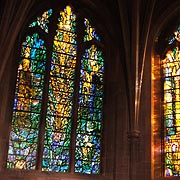 |
 |
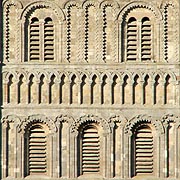 |
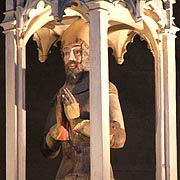 |
The pictures on this page are cropped examples of images in our high resolution photo library. Please e-mail us for details of these or similar image availability at our very reasonable reproduction rates. Location release may be required for some photos.